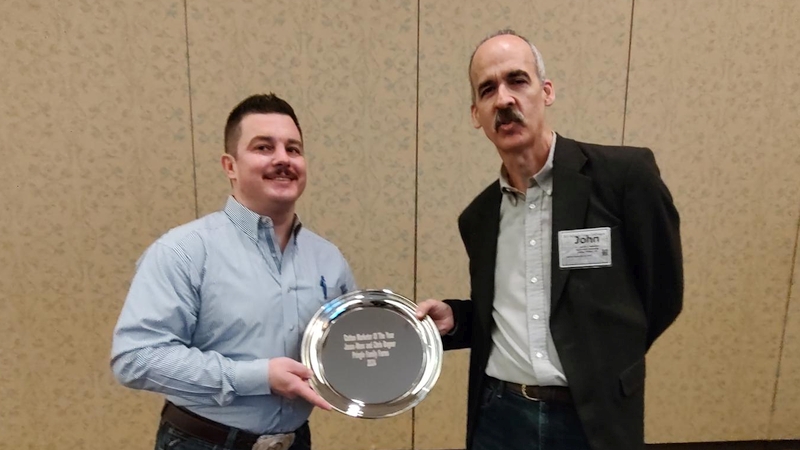New Innovations Could Give Growers Bigger Bottom Lines in 2007
With the 2006 growing season in the past and the 2007 harvest almost a year away, cotton farmers wind down from another production cycle. As they think about this year’s crop, they consider what could have been done differently, perhaps should have been done differently, to reach their agronomic goals. Many cotton growers will consider using different seed varieties next year, while others consider newer, cutting-edge inputs and crop protection combinations.
But as farmers analyze their past growing strategy and weigh the possibility of changes in the next year, the option of investing in new farming equipment is a choice that could mean big dividends. With the next season on the horizon, cotton growers look for “the next big thing” to improve their planting, management and harvest systems in future years.
The Next Big Thing
Every so often a company comes out with a product that they claim challenges the status quo. Only the future will prove if they are right or wrong, but Case IH claims that is precisely what they have done with the introduction of their new Module Express 625 picker. The first commercial cotton picker with the ability to build modules while harvesting, the Module Express 625 works within current production systems by building 8-foot-long by 8-foot-wide “half” modules that are 16-feet long. By combining picking and module-building into the same process, Case IH believes they will save cotton farmers time and money in the long run.
“Case IH cotton pickers already can pick more cotton with our two-sided picking system, and we want to make customers even more productive by streamlining the module building process,” said Trent Haggard, director of Case IH global marketing for the cotton industry. “It has the power to handle picking in the toughest conditions, the productivity of our proven two-sided picking design, monitors providing total systems overviews from spindles to module builder, and matched tank capacities to handle long 14-hour harvest days.”
Because of its “one man, one machine” cotton harvest and module-building capabilities, Case IH believes harvest costs will be dramatically reduced. While that should be good news to farmers, the shorter module length could mean good news for gins. According to Haggard, the modules are purposely sized to maximize gin-feeding rates without adding any contamination. “In the past 30 years we’ve looked at modules of various shapes and sizes, similar to large hay bales, but they required changes in the handling and ginning infrastructure. These don’t,” Haggard said. “During the most recent 6 years of testing, we’ve successfully run thousands of Case IH modules through gins across the Cotton Belt, from North Carolina through California, and they’ve been incredibly well-received.”
Getting In On the Hunt
John Deere continues to test a similar product and is in the development and field-testing phase of its own on-board module-building picker. According to the company, the on-board module builder produces poly-wrapped round modules that are consistent in size and density and are designed to help protect overall cotton quality.
John Deere continues to test several of these new proto-types with producers and ginners across the Cotton Belt. With input from university scholars and industry experts, the company is working to ensure that this new harvest solution meets the reliability and performance needs of the cotton industry.
In addition to testing their new module-building picker, John Deere continues to promote its 15-inch cotton system. John Deere PRO-12 VRS (Variable Row System) cotton picker heads give farmers the ability to pick 15-inch cotton on solid rows, but the PRO-12 VRS Cotton Picker Row Unit picker head also allows farmers to harvest between 15- to 40-inch rows, giving producers other options like “skip 15” cotton which consists of 2 rows that are 15 inches apart with a 25-inch gap between those rows. The company said narrow row cotton is becoming more and more popular, and Jeff Barnes, John Deere’s Crop System Specialist, estimates that in the area around Memphis, TN, alone there were about 35,000 acres of 15-inch cotton grown in 2006.
“The picking heads fit new John Deere 9970 and 9986 Cotton Pickers, and also retro-fit 9970, 9976 and 9986 picker models built since 1997,” said Mike Miller, product planner, John Deere Des Moines Works. “The versatile row units can harvest 15- to 40-inch cotton with little changeover time required.
“The PRO-12 VRS units offer narrow-row cotton producers high-quality, efficient harvesting as well as the field-proven features of the other PRO Series headers,” Miller said.
Revving the Engine
Case IH and John Deere are not the only “big iron” companies providing farmers with newer and better options for crop production. AGCO Corporation has incorporated a new engine design in its RT Series Generation A tractors that will improve overall performance. The company believes the new engine design “boosts power, saves fuel and meets or exceeds latest EPA Tier III emission standards.”
The 6.6L AGCO Engines are wastegate turbocharged, 24-valve powerplants, which incorporate advanced, high pressure common rail injection from BOSCH, the market leader in fuel injection technology. Constant injection pressures of up to 24,000 psi allow for precision electronic control over the entire fuel system. The 4-valve-per-cylinder head not only improves gas flow but also allows redesigned high-flow injectors to be centrally positioned over the combustion chamber creating a more even fuel injection and an improved, more efficient combustion.









